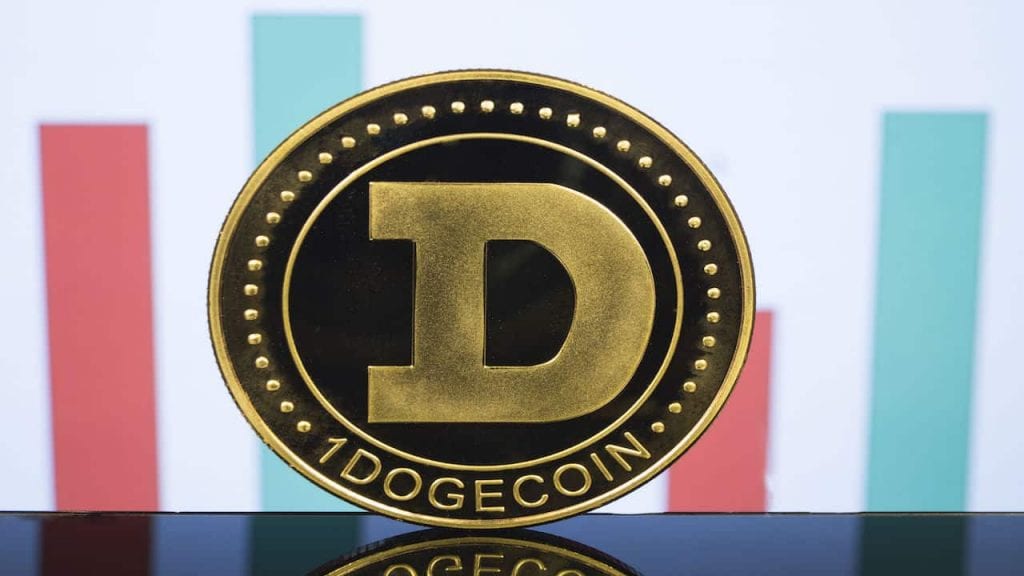Dogecoin Mining: the meme that became a currency
Dogecoin miners – contrary to the name, those that mine Dogecoin aren’t virtual ‘dog walkers’, but rather fans of the cryptocurrency associated with the famous dog meme.
Dogecoin was launched as a Bitcoin parody but has since achieved real cult status. Although the value is nowhere near comparable to that of Bitcoin and co, that’s not what the founders are after. Let’s take a look at what’s behind Dogecoin and why there are now so many fans of the currency.
- Dogecoin mining barely pays for itself
- Miners work mostly for humanitarian purposes
- Mining for the individual is unsuitable, for the most part, due to high costs
- Dogecoins can also be received as a gift

Content:
- What is Dogecoin mining?
- Dogecoin mining – How is the cryptocurrency generated?
- Is Dogecoin mining worth it?
- Mining pools vs. solo Dogecoin mining
- Advantages and disadvantages for miners
- Alternatives for Dogecoin miners
- Dogecoin – Revolutionising virtual tipping
- Conclusion: Dogecoin miners can earn with the ‘dog’
What is Dogecoin mining?
Dogecoin mining refers to the process by which new coins are rewarded by verifying transactions on the Dogecoin blockchain. It sounds quite simple in theory, yet the practice is somewhat different.
The whole process is like a lottery whereby the computer works and acts as a node that verifies and confirms the transactions within the network. Several computers work on a transaction block at the same time. Each system could be rewarded for their work, but this is not the case – only one computer will ever receive and win the coins. It’s the computer that adds the new block of the transaction to the old block that receives the coins.
Dogecoin mining compared to crypto mining other currencies
The SHA-256 algorithm is used to control Bitcoin mining. Dogecoin, on the other hand, uses Skrypt, which requires less energy and is significantly faster. Since 2014, it has been possible for Litecoin and Dogecoin to both be generated in one process. As such, Litecoin mining is closely related to Dogecoin mining. Compared to the rewards, Dogecoin mining is much more lucrative. But the coins are worth much less than Bitcoin or Litecoin.
Dogecoin mining – How is the cryptocurrency generated?
We’re already familiar with Bitcoin and the mining of other digital currencies. But there are also Dogecoin miners who participate in the generation of the cryptocurrency. In return, these also receive coins as a reward for their efforts.
In principle, everything functions in much the same way as with other cryptocurrencies. However, as mentioned, the value of Dogecoin is much lower when compared to Bitcoin and other altcoins. As such, Dogecoin miners are not obsessed investors, but rather idealists of their own community.
Dogecoin mining – What is required
Above all, Dogecoin mining requires a lot of computing power. Anyone who wants to mine must have good hardware. In addition to a powerful system, electricity costs are also crucial. Electricity costs are particularly high in the UK and many other European countries. As a result, mining is rarely profitable.
To compensate, many Dogecoin miners join so-called ‘pools’. Here, resources are pooled and the profits distributed within the Dogecoin community.

Is it worth the effort for Dogecoin miners?
To answer this question, we need to look at the rewards that Dogecoin miners can hope to realise.
A store of 10,000 Dogecoins has a value of around $740. However, a reward of 12.5 bitcoins has a value worth over $784,000. With the two compared, we certainly see that Dogecoin mining is arguably not really worth it. But Dogecoin miners are idealists – after all, the currency itself was initially created as a Bitcoin parody and is now used for micropayments on the internet.
Hardware required for Dogecoin mining
Determining whether Dogecoin mining is worthwhile greatly depends on the costs involved. Here, the hardware and electricity costs are the most important factors to consider. As highlighted, as an alternative to solo mining, more and more miners are joining forces and working in pools.
Mining pools vs. solo Dogecoin mining
Dogecoin miners that operate alone usually have much more cost expenditure than actual coin revenue. This is why many choose to participate in a pool. To be a member of such a community, Dogecoin miners pay a fee. These fees aren’t flat and are typically set on an individual basis.
As the name suggests, the aim of the pool is to ‘pool’ computing power and thus mine faster. The reward is then shared among the participants.
Advantages of mining pools
Those who mine alone usually have to wait longer to confirm their transactions. The reason for this is primarily due to the lack of computing power. Sometimes it can take months until a block is mined and it isn’t always guaranteed that there will be remuneration for this. This risk is minimised in a pool.
If coins are paid out, one advantage for the individual Dogecoin miner is that they don’t have to share them with the pool community. There is also no need to pay pool fees. Nevertheless, it is not always recommended to mine alone for reasons of efficiency, which can be overcome as part of a pool.
Managing Dogecoin securely
A wallet is required to securely store the coins received from mining. Although wallets are available from a number of providers, not all wallet solutions are compatible with Dogecoin. Offline wallets are highly recommended as a solution, as they aren’t connected to the internet and minimise the risk of hacker attacks.
However, if you require quick access to your wallet, anytime, anywhere, it’s worth opting for an online wallet. Password protection and two-factor authentication help to make the wallet more secure.
Advantages and disadvantages for miners
When it comes to Dogecoin mining, there are two sides to the coin. Let’s look at the advantages first.
Dogecoin miners are part of a large community and can each contribute to the generation of coins. Of course, they also get paid for their efforts.
While the number of Dogecoins is high compared to Bitcoin and the like, they’re worth much less. Nevertheless, the coins can be used for good purposes in social networks, which is what drives many Dogecoin miners.
Disadvantages of Dogecoin mining
When it comes to Dogecoin mining, the disadvantages outweigh the advantages.
Since Dogecoins are worth comparatively little, the increased number of coins as a reward rarely pay off. Combined with high electricity costs and the powerful hardware required to mine, the investments associated with Dogecoin mining are not at all feasible for many miners. That is why they join together to form pools, which also involve a fee, however.
Alternatives for Dogecoin miners
Those who want to receive Dogecoins without mining can explore other options. In this regard, there are the so-called Faucet networks, whereby coins are offered free of charge, upon request. Dogecoin is not the only coin available in this respect.
To receive the coins for free, registration with the respective provider is required. A wallet is also required. However, the number of coins given away are minimal. Faucet networks are merely intended for promotional purposes and to help newcomers to the currency receive their first coins. The advantage with such Faucet networks is usually that no minimum age is required and the coins can be earned quite easily – although, there are certain limitations involved.
Buying coins
Another means of obtaining Dogecoins is, of course, by purchasing them through the necessary provider. In this case, the current Dogecoin price is a decisive factor. Once purchased, coins are immediately transferred to buyer’s wallet once the transaction is processed.
We cannot say at this stage whether this type of investment will guarantee future profits. Although many experts foresee a positive forecast for Dogecoin, it’s true to say that the price will never reach the heights of Bitcoin or Litecoin. Many traders, therefore, don’t regard Dogecoin as a long-term investment.
Dogecoin – revolutionising virtual tipping
Rather than making big profits, or trading Dogecoin against USD, the coins are used for completely different purposes. Dogecoins can be used as a means of ‘tipping’ online. On platforms such as Twitter and Reddit, users can award the currency in the form of a tip, in place of a ‘like’.
Since the value of Dogecoin is comparatively low, such virtual giveaways are really regarded as small gestures. However, micropayments are becoming more and more popular as the presence of virtual tipping also increases.

The community’s willingness to help knows no limits
The Dogecoin community is an extremely useful asset. An example of this came in 2014 when the Jamaican bobsleigh team was unable to secure funding for that year’s Sochi Winter Olympic Games. There was a campaign in the Dogecoin community that raised $25,000 in the currency. With this, the team was able to travel to the games. Indeed, many charitable causes have benefitted from the Dogecoin community in recent years.
Conclusion: Dogecoin miners can earn with the ‘dog’
Dogecoin miners typically have different ambitions to their Bitcoin contemporaries. Although Dogecoin miners can hope to earn more coins than Bitcoin, Dogecoins are worth much less. When the earnings are measured against the expenses, Dogecoin mining is typically not profitable. Miners that join together in pools to share their resources can hope to work more efficiently. But fees can also be incurred.
As highlighted, another way to earn Dogecoins is to buy them. While there are various networks that give away small amounts of coins (for promotional purposes), Dogecoins are not suitable as an investment opportunity. Nevertheless, the number continues to increase.
Dogecoins have created a whole new way of regarding cryptocurrencies – distributed as virtual tips or small gifts to other users in social networks. The community is also known to have supported charitable causes, which certainly has its own appeal.






